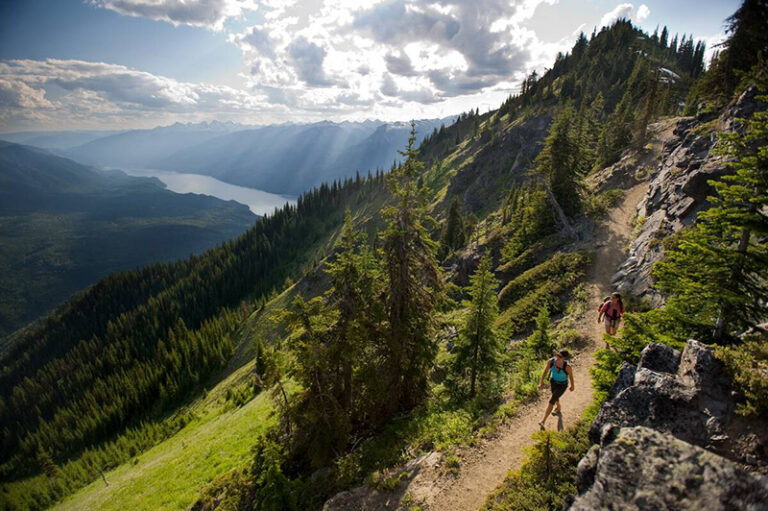Maybe you pushed it extra hard this ski season and are feeling pain in some unusual places as spring approaches. Or, like avid Spokane skier Landon Crecelius, you have the unfortunate experience revisiting a previous injury. Crecelius, who had 46 ski days under his belt when I spoke with him in early February, has suffered multiple ACL knee injuries over the years and had added a fourth to this list in mid-January. Being especially active in the ski community—coaching at 49 Degrees North, teaching backcountry ski classes for the Spokane Mountaineers, creating content for his popular BC Ski Friends email list and blog, and skiing regularly with his family and friends—his latest injury was a sobering blow.
“It was definitely a season-altering injury,” reflects Crecelius. “But I’m a weirdo. I finished skiing that day on one leg. My limping kept getting better so I went up to coach skiing the next weekend and at two weeks went backcountry skiing.” Despite his passion for getting out on skis, Crecelius knew he needed to give his knee adequate time to heal.
It’s not uncommon, especially for us aging skiers and snowboarders, to feel a little rough around the edges after a season of getting after it, but it’s how you respond to those aches and pains that can make all the difference.
Rest and Recovery
“When my knee is beat up, rest can fast-track healing,” Crecelius explains. He also highlights the important role physical therapy can play, whether you visit a professional or do PT exercises on your own.
“My wife teaches Barre and we will stream two of those workouts before work many mornings. It’s got hip movements and so much hip and core work, it has been kind of a super power,” says Crecelius. He also stays active on a stationary bike or riding and running outdoors while recovering from his injuries, all the while trying his hardest to give his knee a bit of a break from sliding on snow.
While the physical pain and recovery challenges after an injury often get the most attention, Crecelius touches on the psychological toll many injuries take on active people. “When I got injured this season, as much as I was physically hurt, there was an emotional element. I was feeling a little depressed. There’s a big sense of loss that comes with losing an activity,” he says. “You have to recalibrate life priorities, and it can be really hard.”
Strength Training as a Path to Recovery
Trey Nichols, a Spokane-based physical therapist and owner of NW Mobile PT, points out that when we ski we work our muscles and backs more than with many other activities. Even if you only have aches and pains and don’t have a clear injury to point to, he says, working on those strained areas after a hard season is key. “The recovery tactic of stretching any tight areas will be helpful for reducing the pain and aches,” he says.
Nichols notes that while rest and stretching are important first steps toward feeling back to normal, the next critical step is strength training. “To have the best recovery from this ski season and to be truly ready for next ski season and other sports and activities, strength training is the critical piece to the puzzle that is often missing, especially for joints that are the most achy. Without being intentional about strength training, those of us who are not feeling like we’re 20 anymore are only going to have more and more aches and difficulties in the upcoming ski seasons.”
Nichols says he’s always a fan of strength training in the off season for the sake of being as productive with that time as you can. He says you can think about the same positions you get into when you’re skiing or snowboarding. “Getting into those positions for the sake of building that strength up in that nice, controlled environment is a great way to build strength with control of your ankle, knee, and hip that will carry on into the next season.”
As we get older, he adds, we don’t have that same strength and resiliency. “It’s important to work more on strengthening to counter that and continue to enjoy the activities we enjoy with less or no aches and pains.” With strategic rest, cross-training, and strength training, you can make sure you’re ready when the snow starts flying again next fall.













